

Photo taken on April 12, 2016 shows the Tropical Plants Pavilion of the Tangshan International Horticultural Exposition 2016 in Tangshan City, north China's Hebei Province. The 171-day expo will kick off here on April 29. [Photo: Xinhua]
As people in the city of Tangshan in Hebei preparing to commemorate the 40th anniversary of a devastating earthquake which tore through the industrial city later this summer, by highlighting the achievements made since then.
Tangshan, a city about 150 kilometers east of Beijing, was reduced to pebbles in a mega earthquake that hit on July 28th, 1976.
Liang Chunlei was ten when the magnitude-7.8 quake rocked the city.
"It's really hard for those who survived the quake to recall that moment. It's really tragic."
The magnitude-7.8 quake claimed the lives of over 240,000 people, almost a quarter of the city's population.
Forty years later, the city's population has increased to nearly 8 million. Its per capita GDP was more than 10,000 US dollars last year, ranking 25th in the country.
"The development of Tangshan has been really fast over the past decades. Just take a look at the streets, much better than 30 years or even 10 years ago."
And it's not just that.
A study conducted by the Chinese Academy of Social Sciences suggests Tangshan has the potential to become one of China's richest cities by 2025.
"In the light of its geographic advantage, we see it as the 'Shenzhen in the North' and the center of the circum-Bohai Sea area because it has a good foundation of industrialization with a complete charred coal production chain."
Dr. Wang Yufei is Associate Editor of the 2015 CASS report on urban competitiveness.
"Moreover, Tangshan belongs to the Beijing-Tianjin-Tangshan urban cluster, which is one of the country's biggest urban clusters. The development of the cities in the area will reciprocally benefit Tangshan. That's why we've had such an outlook for Tangshan."
As one of China's major steel production bases, Tangshan's steel output makes up one-seventh of the country's total.
It has helped the city generate revenue over the past decades, especially when China's economy enjoyed double-digit growth featuring infrastructure construction and property investment.
But that former economic strength is now gone.
Wang Yufei notes Tangshan's former life-line has now become somewhat of an anchor.
"Compared with Beijing or Tianjin, Tangshan's industrial structure is just flat, which is a big problem for the city's economic growth."
On top of this, Tangshan has some of the worst air pollution in the country due to the high level of coal used to fire the steel mills.
To cope with the challenges, the city has begun cutting its steel production levels, while attempting to upgrade its industrial chain.
"Whether its transformation can be successful mainly depends on its industry innovation, including in steel producing technologies. Another aspect it needs to work on is to strengthen the city's 'soft power' in such areas as cultural atmosphere."
In an attempt to put a softer face on the hard-steel image Tangshan has, an International Horticultural Expo will open in the city this Friday.
For CRI, this is Tu Yun reporting from Tangshan.
 |
Day|Week

 Female official wearing traditional Han costume to promote local tourism
Female official wearing traditional Han costume to promote local tourism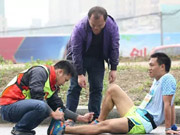 Over 12,000 Runners Seek Medical Care in S China’s Marathon
Over 12,000 Runners Seek Medical Care in S China’s Marathon Six Luxury Sports Cars Totaled after Fail Attempts to Cross China’s Most Perilous Highway Linking SW China’s Sichuan and Tibet
Six Luxury Sports Cars Totaled after Fail Attempts to Cross China’s Most Perilous Highway Linking SW China’s Sichuan and Tibet Incredible Transformation: “Witch Child”Whose Parents Left Him for Dead in Nigerian Makes Speedy Recovery
Incredible Transformation: “Witch Child”Whose Parents Left Him for Dead in Nigerian Makes Speedy Recovery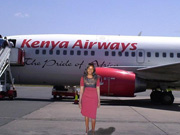 Kenyan woman's crappy photoshopped pictures make her a web celebrity
Kenyan woman's crappy photoshopped pictures make her a web celebrity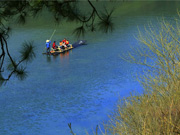 Magnificent view of E. China's Anhui province
Magnificent view of E. China's Anhui province Global landmarks captured in striking shots
Global landmarks captured in striking shots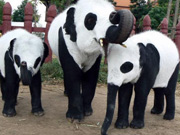 Thailand Elephants Disguised as Pandas Sparks Debates
Thailand Elephants Disguised as Pandas Sparks Debates College girl dresses as mermaid to mark World Water Day
College girl dresses as mermaid to mark World Water Day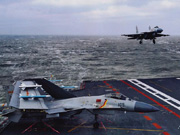 J-15 fighters in drill on Chinese aircraft carrier
J-15 fighters in drill on Chinese aircraft carrier